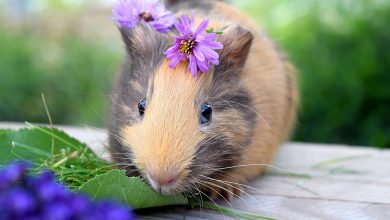Using LED Light for Indoor Plants

Believe it or not, plants are good listeners. There is no one who does not witness those who speak with the flowers or plants he has grown. According to researches, it has been determined that talking to plants has positive effects on their growth and health. In addition, there is another factor that is more beneficial for the plant affected by sound waves, and that is light. In this article, for those who are curious, there is information on the use of LED light in order to get better efficiency in plant care.
Different Types of Light
Plants use light to do many things. The first thing that comes to mind is to make food or energy, and plants convert light into energy through photosynthesis. But they also use light to decide which direction to grow, how long to hold stems, how big to make their leaves, when to bloom, and more. To tell plants to grow in a certain way, farmers need to know two things. First, knowing what kind of light will respond to what kind of response. Next is to know just what kind of light should be given to indoor plants. The types of light mentioned here are different wavelengths of light. When talking about light, different light colors are mentioned as seen. Eyes see longer wavelengths as red and shorter wavelengths as violet. But there is also a light that the eyes cannot see but can feel by the body. Wavelengths longer than red light or even infrared light make us feel warm. Wavelengths smaller than purple are called ultraviolet (or UV) sunburn.
Knowing What Kind of Light Is Required
All of these wavelengths of light come from the sun during the day, but plants are selective and do not need or want all these different types of light. The trick for scientists and farmers is to understand which types of light plants turn into food, which species lead to more fruit or flowers, and which species are being ignored. This understanding comes from studying the chemicals plants use to interact with light. Most important is a pigment called chlorophyll that is used in photosynthesis to make energy for the plant. Chlorophyll is the factor that gives plants a healthy green color and gives a great clue about the types of light these plants will love. But while chlorophyll generates energy for a plant to grow, it doesn’t help the plant how to grow. This job falls on chemicals called phytochrome and cryptochrome. Phytochromes are only sensitive to red light and tell the plants how many leaves to make and how large to make. On the other hand, cryptochromes are only sensitive to blue light and control how plants respond to a daily light cycle. Cryptochromes help tell plants when to bloom.
Using Light for Healthier Plants
Farmers and researchers got this information about the different chemicals in plants and conducted an experiment to test how light affects plant growth. In this experiment, light tests of different colors were applied to the strawberries indoors and their growth was observed. Growth was normal under red light alone, while growth accelerated when blue and red light were both included. But this is not the only case detected. Different foods, sugars and taste chemicals were also determined according to the red to blue light ratio used in strawberries. In addition, depending on the ratio of red-blue light, they mature faster or slower. So the researchers not only grew strawberries indoors using a few wavelengths of light, but they also checked how healthy and tasty the strawberries were and found faster or slower growth rates.
Another group of researchers interested in flowering plants, the chubby bellflower will flower was subsequently exposed to certain species of red light, pansies when flowering did not change at all under the same red light. Instead, the stems of the pansies have grown longer stems but are more blooming overall. This understanding can help florists make plants bloom at the right time for caregivers. The difference between bellflower and pansy suggests a major challenge for researchers. Each plant species had preferences for different wavelengths. But there is another problem here, which is the question of how to give them just that kind of light after learning that a certain wavelength of light will tell plants what to do. This is where LEDs come into play.
Benefits of LED Light in Plant Growing
Light has gone through a lot of evolution until the LED light comes. Light sources such as flames, incandescent light bulbs or fluorescent bulbs are difficult to fine-tune to emit the precise wavelengths of light. It can be difficult or complex in a lab, but trying to run an entire indoor farm requires simpler technology. Fortunately, LEDs are easier and provide the desired light easily. This is due to the changing of the light and the ability to adjust the wavelengths. Farming indoors in the sun may not be wise at first. Indoor farms can be closer to urban areas, reducing both the monetary and carbon cost of sending large quantities of food from rural areas to cities. Climate can also be unpredictable, and controlled indoor farms can be vital if the weather becomes too variable to easily grow the food they need. There is also the benefit of a high degree of control over the taste of the food, how nutritious it is and how quickly it grows. Instead of giving plants the same light they receive from the outside to chance, nutrient-dense and delicious foods can be created.
In indoor farming, LEDs are useful for more than communicating with plants. LED bulbs are much more efficient than other types of bulbs. If you have to run the lights 12 hours a day, using old bulbs comes quite the bill and also, it is necessary to replace those bulbs very often. With LEDs, it saves on long-term electricity bills and without having to change bulbs frequently (with a little more upfront cost). LEDs also do not generate much heat, so they can be placed very close without making the plants too hot. It also prevents less wasted light from being wasted or other areas of plants without leaves from being damaged.
Learning about how LEDs use light is a great combination of different fields of engineering and biology. As you learn more about the biology of how plants work, plants grow more efficiently, increase yields, enrich nutritional values and increase flavor. With these biological developments, awareness is raised about how to apply these findings in environments. This allows indoor farming to aid food production in smaller and diverse areas. Another is to grow plants on long space travels. While LEDs are an exciting technology for a daily, given task to light things up in homes and businesses, they also change the way we live in other ways. Ample amounts of nutritious food help less frustration in gardens and produce healthy products. Because this is kind of a way of telling the plants exactly what you want from them rather than talking to them to grow.





